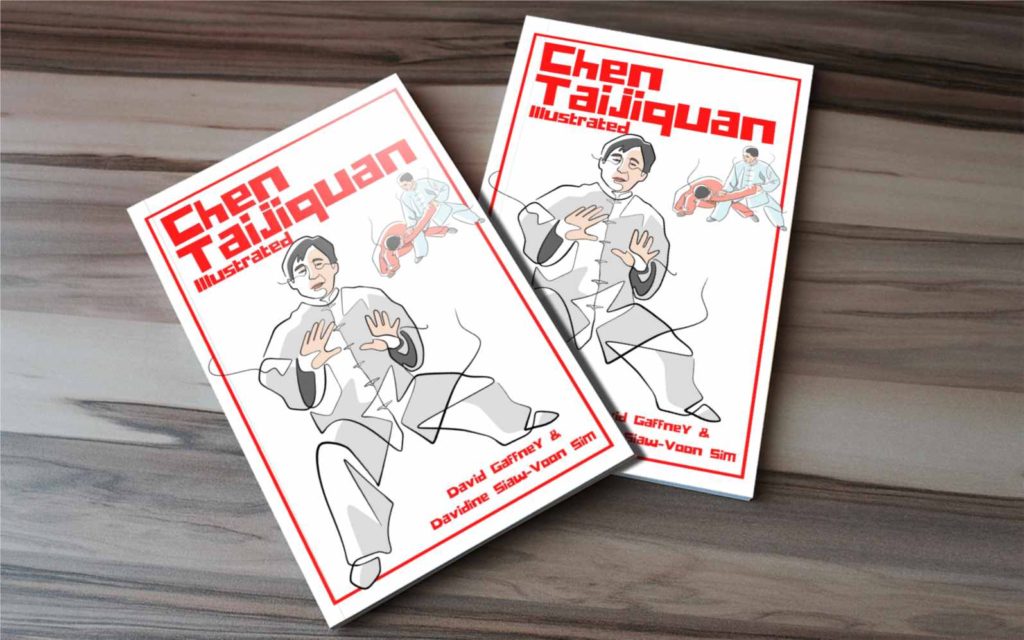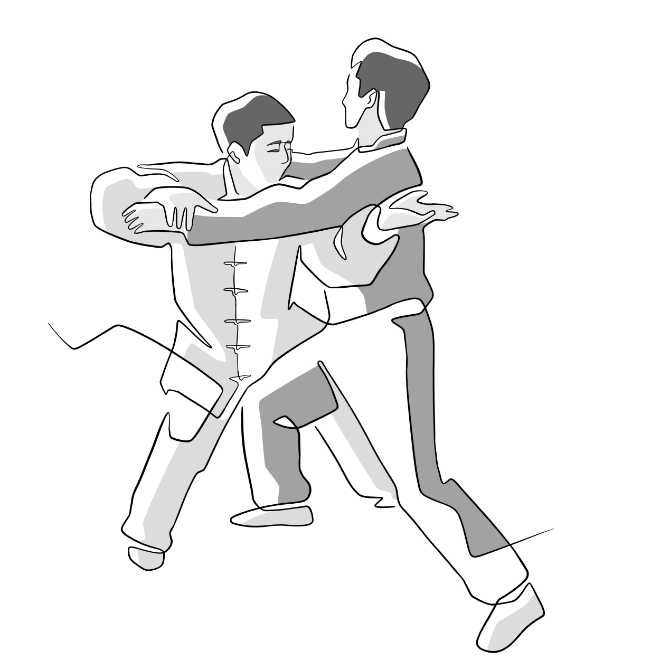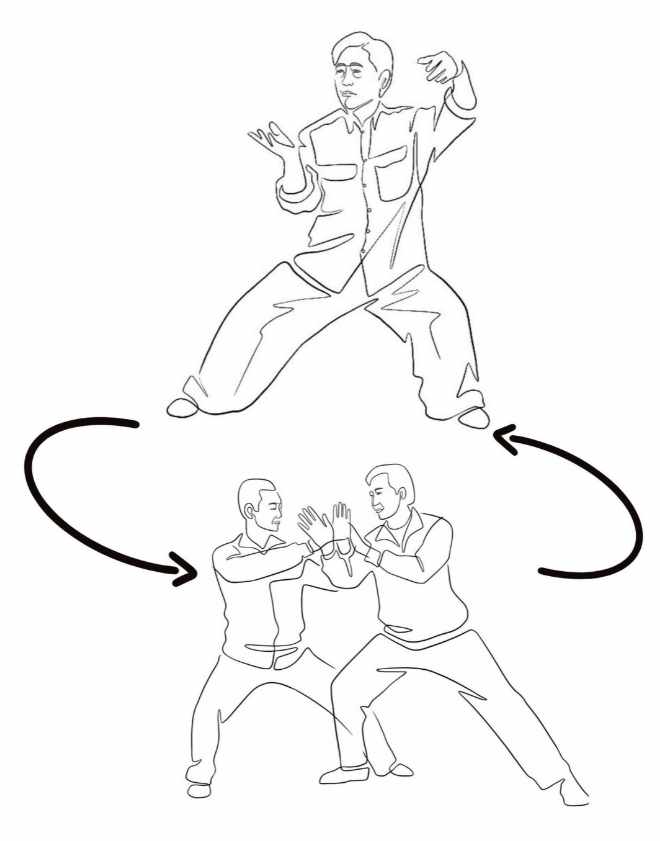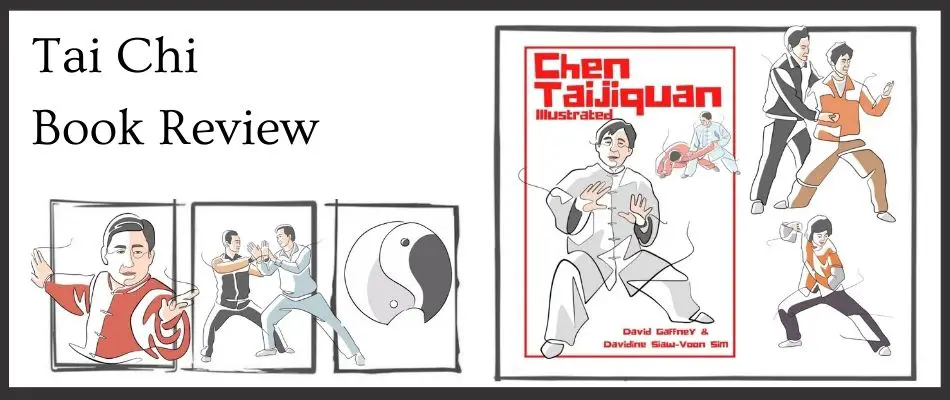An aspect of studying tai chi that can be daunting at the beginning is understanding the many new Chinese words that describe our postures and movements. As a newbie, it can be overwhelming and most of us justifiably skip past it to focus on learning the moves of the form. As a seasoned practitioner, we find ourselves confronting these terms again though in an effort to learn how to do the tai chi form better. A new book, Chen Taijiquan Illustrated makes this easier for new and experienced practitioners alike.
Chen Taijiquan Illustrated is a book that organizes Chinese concepts needed to understand, correctly perform, and benefit from tai chi into three groups: Body Rules covers posture suggestions, Practical Use explains the different energies applied in tai chi, and Philosophical Concepts highlights the relationship to our health and life.
There is a huge Catch 22 when studying tai chi. Too much information at the beginning can cause people to quit before they even get started. Too little information and years down the road you say “Why didn’t I know this at the beginning!!!” This book manages to land right in the middle. I think it accomplishes this with its organization and by how it incorporates some unique iillustrations.
If you are not yet familiar with these authors, check out some of their other books in the reviews I wrote on Chen TaiJiQuan and Tai Chi Masters and Methods.

About Chen Taijiquan Illustrated
Chen Taijiquan Illustrated is divided into three sections. It is not a difficult read or a long read but I found myself reading it slowly to mentally chew on the different concepts that were being presented.
The introduction and section one on Body Rules cover tai chi concepts that get the body in the correct posture to perform tai chi correctly. It does a good job at presenting what you should be thinking about while doing the form to be able to make corrections and maintain proper movement. I think all of us want our form to look good, no harm in that. But the real value in correcting posture keeps all the joints safe and enables blood and energy to flow well so we get the real benefits from our practice.
Section two gets a bit more complex. It starts off with instructions on eye, hand, and foot placement and then deep dives into the eight methods for movement and how to transmit these correctly during the tai chi form. It then introduces the four main energies (listening, understanding, neutralizing, and releasing power) which are essential for progressing from being a beginner to a avid practitioner. This is new information for a lot of tai chi enthusiasts and it is organized in a way that isn’t too daunting. Section two ends with nine essays on partner work.
The last section is on philosophical concepts. It’s a difficult topic to enter into and we have all seen or heard quotes from past masters that sound beautiful but you’re never sure what to do with the information. I like how they approach this section. They limit their discussion to five topics (wu ji, tai ji, yin yang, san cai, wu de), define them, and give examples. I was left finishing that section with a sense that I will have a better understanding if I encounter them in class or in texts in the future.

What I Like About This Book
Chen Taijiquan Illustrated has two main strengths. The authors have gone through considerable effort and I would imagine expense, to include tons of illustrations to demonstrate the point they are trying to make on each page. Secondly, the book progresses from broadly applicable concepts into more fine-grained topics. This pretty much matches what we need to know when beginning tai chi, how to improve when we have been practicing for a while, and then complex ideas that we need to understand tai chi more deeply.
Tai Ch Illustrations
For those of us that have been researching and reading tai chi for a long time you know that there is a pretty low bar for diagramming or photographing aspects of tai chi. Most books have very few images. If they are actually photos, chances are they are of the super grainy early 20th Century variety, and very tiny at that. Add to this that most photos are of people wearing the ubiquitously baggy tai chi uniforms and it is really difficult to see some of the correct aspects of the postures like the position of the pelvis, knees, or lower back.
To get around this, many authors have opted for stick figure drawings to illustrate proper posture but you are typically left with popsicle stick characters and arrows telling you which way to move. Chen Taijiquan Illustrated has images on almost every page. They aren’t a combination of things borrowed from the internet but have been drawn specifically to demonstrate the point of each paragraph. This makes the foreign words like song, ren, and zhongzhen understandable and come to life.
I want to be clear that it’s not just the prettiness or consistency of the images that is important. The artist took the time to study the joint positions and erectness of the postures and capture them in the drawings. As an example, it is hard to teach new students how to keep the groin creases (kua) open while performing the form and have the knees pointing out and not down. Here is a simple illustration from the book that demonstrates this well.

I reached out to David Gaffney to ask about this and compliment the book and he shared that they worked with an artist to bring this about. This is really helpful to see the posture that the words are describing.
The Organization of Chen Taijiquan Illustrated
The book is broken into three sections which I think directly matches the progress from being a new to an accomplished practitioner. It starts out with Body Rules. These are the big, bulky concepts that are present in every single movement or stance. It includes how to stand, how to remain erect and upright, how to stay relaxed, and how to move in a rounded way. When we are new to tai chi, these are the macro-adjustments we are trying to make sure we include in everything we do. Even down the road, when we are wanting to improve we are usually returning to these foundational concepts.
Now let’s say you have the general choreography of the tai chi form down and are wanting to understand more and experience more of the health benefits. Then part two on Practical Use is for you. This section heads into more finite discussions such as what the hands and eyes should be doing. It also introduces really grounded explanations of the eight methods of tai chi movement and the four types of energy we use. Pretty heady stuff so it is nice to have it laid out in short, concise paragraphs. There is a bonus in this section for people looking to work with partners because it includes considerations for pushing hands drills. This isn’t covered in most texts.
Lastly, what would a tai chi book be without philosophical ideas? All joking aside, they end by opening a discussion on four concepts such as tai-ji and ying-yang. The intent is not to teach or pontificate but rather to explain a bit so that when you come across these concepts in your learning that you can better understand them.
What I Would Change About This Book
The authors David Gaffney and Davidine Siaw-Voon Sim are dedicated Chen style practitioners. The sources for their quotes and information are all Chen masters and grand masters so the title Chen Taijiquan Illustrated makes sense. However, most information in the book is not Chen-specific other than maybe the chapters on pushing hands. I believe that any Yang, Sun, Wu, or WuHao practitioner would easily benefit from the concepts because they are foundational.
So many resources on tai chi paint the specifics of one style without at least acknowledging what is universally shared. This leads to many of us missing out on really good information because it wasn’t on our radar or because we think it doesn’t apply to us. For example, two Yang style books were really influential to my progress but I had never heard of them until a couple students who had previously studied Yang mentioned them in class. My hope would be that this book makes the distance around all the different tai chi circles to help everyone make advances together.


